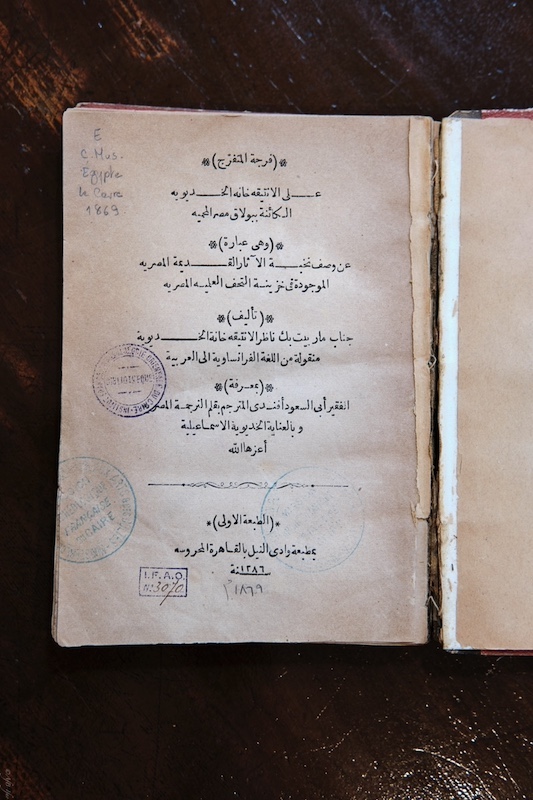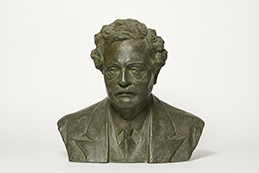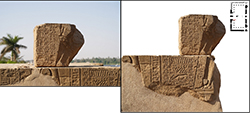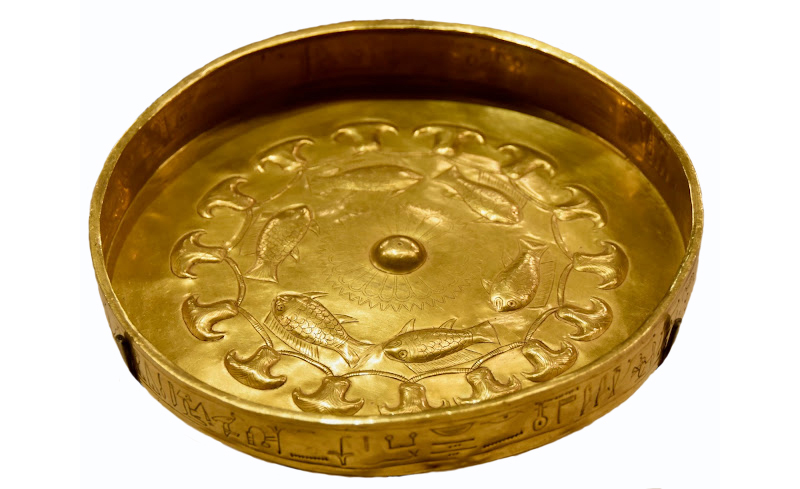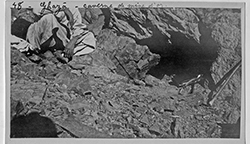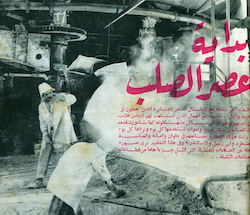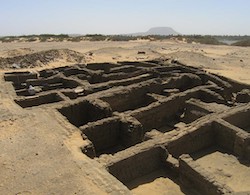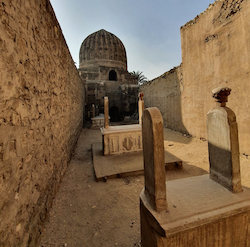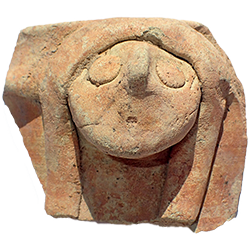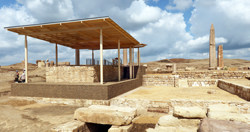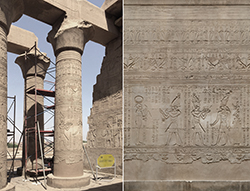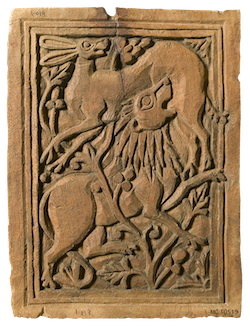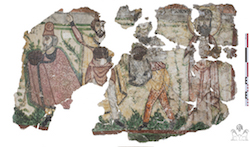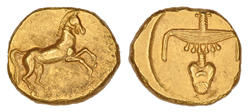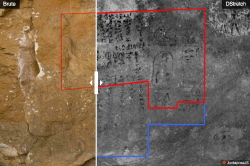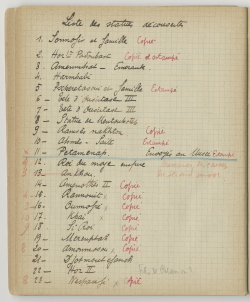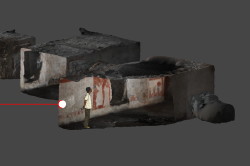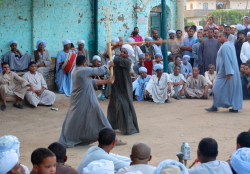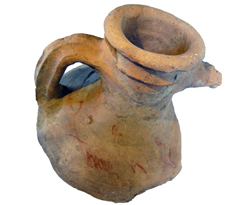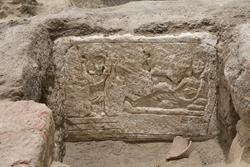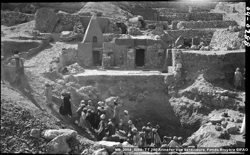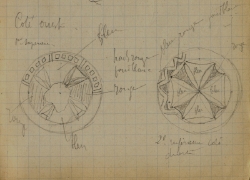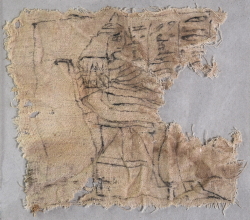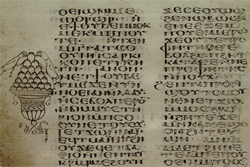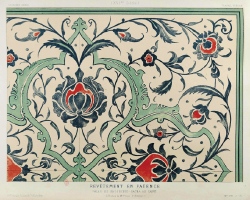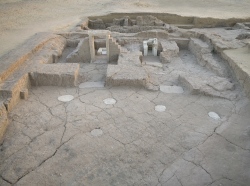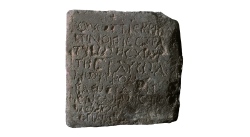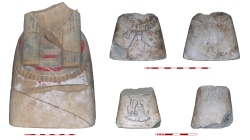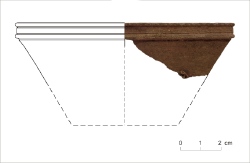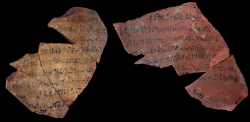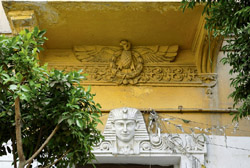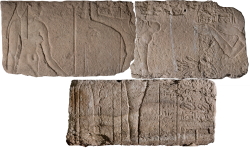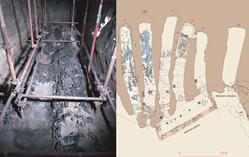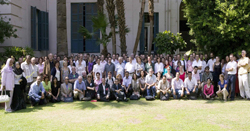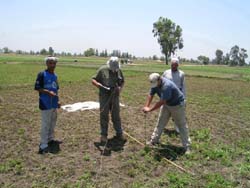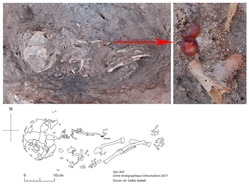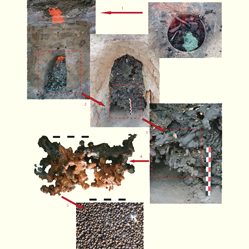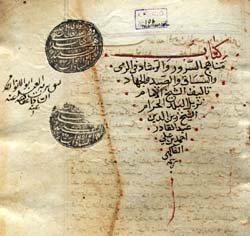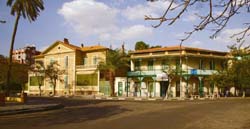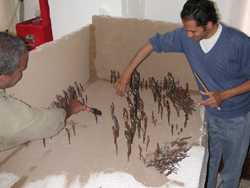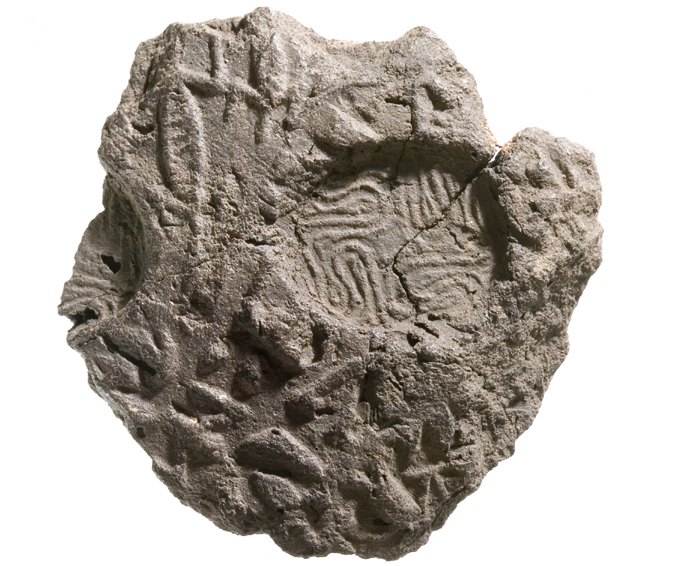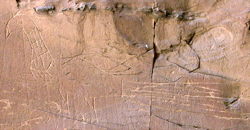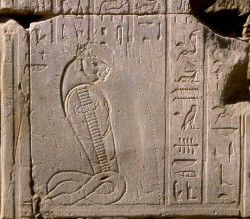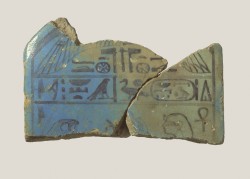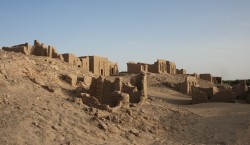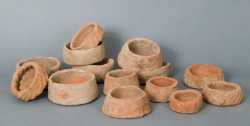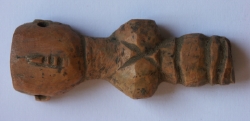Une image, un commentaire…

An Arabic Amulet from the Dust of Edfou
Among the hundreds of tiny Arabic papyrus fragments unearthed in Edfou nearly a century ago and now preserved in the Archives and Collections Department of the Ifao, a small, tightly rolled piece of papyrus drew my attention. At first glance, its compact form and careful folding suggested that it was not an ordinary document but an amulet, likely tied with a string and worn around the neck. This fragile roll, now separated from the person who treasured it, offers a rare and personal glimpse into the spiritual world of someone who lived more than a millennium ago in the ancient city of Edfou.
Once unfolded, the amulet revealed not only its text, but also the name of its owner, something exceptionally rare. It contains some verses of the Quran: the final verse of Sūrat al-Kahf (Q 18:110) and the last four verses of Sūrat al-Ḥašr (Q 59:21–24). These are followed by additional religious formulas and personal prayers for its holder, who is identified by his name and his mother’s name: Aḥmad ibn ʿĀʾiša. The supplications ask God to protect him from specific ailments, better understood in medical terms as symptoms rather than distinct diseases, such as fever and migraine headaches, as well as from all forms of pain.
The question arises here: Was Aḥmad ibn ʿĀʾiša suffering from these ailments, desperately seeking relief? Or was the amulet intended as a broader shield against potential harm, part of an ancient customary practice of spiritual protection? The answer remains beyond our reach. What is certain is that Aḥmad ibn ʿĀʾiša eventually passed away, but his small talisman endured across the centuries, silent, folded, and waiting, until it reached us today to reveal its text and its holder.
Dr. Khaled Youness
November 2025
تَمِيمَةٌ عَرَبِيَّةٌ مِنْ تُرَابِ إِدْفُو
من بين المئات من قصاصات البردي الصغيرة التي اكتُشِفَت في مدينة إدفو في بدايات القرن الماضي والمحفوظة اليوم في قسم الأرشيف والمجموعات بالمعهد الفرنسي للآثار الشرقية بالقاهرة، تُوجَد قطعة صغيرة من البردي مطوية بإحكام شديد. أوحت النظرة الأولى لهذه البردية وعلى وجه الخصوص طريقة طيّها الدقيقة بكونها ليست مجرد وثيقة عادية، وإنّما تميمة، كانت في أغلب الظّن معلقة حول رقبة شخص ما عاش منذ أكثر من ألف عام في مدينة إدفو القديمة.
في خضمّ عمليّات ترميم هذه البردية تمهيدًا لأرشفتها، لم تَبُحْ هذه التميمة فقط بفحوى نصّها المطوي منذ مئات السنين، وإنما أيضا عن اسم صاحبها الذي كُتبت لأجله واحتفظ بها في ذلك الزمن البعيد. ويُعتبر ذكر اسم صاحب التميمة أمرا غير اعتيادي في هذا النوع من الوثائق. تضمّن نصّ هذه التميمة مقتطفات من بعض الآيات القرآنية: الآية الأخيرة من سورة الكهف (18:110) وأواخر سورة الحشر (59:21–24)، إضافة إلى بعض الصيغ الدينية الأخرى، قبل أن تأتي على ذكر حاملها والذي عرّفته باسمه واسم أمّه: أحمد بن عائشة. وفي ختامها، احتوى نصّ هذه التميمة على بعض الأدعية لحماية هذا الشخص من بعض الأعراض المرضية، مثل الحمى وصداع الشقيقة وغيرها، ومن جميع الأوجاع كلها.
والسؤال هنا: هل كان أحمد بن عائشة يعاني بالفعل من هذه الأعراض ويبحث عن الشفاء والتعافي من خلال هذه التميمة؟ أمْ أنّ التميمة كانت جزءًا من ممارسة تقليدية قديمة للحماية من الأمراض والأوجاع بشكل وقائي؟ هذه الوثيقة لا تمكننا من الإجابة على هذا السؤال الآن. لكن، من المؤكَّد أنّ أحمد بن عائشة قد توفي في نهاية المطاف، في حين أنّ تميمته الصغيرة صمدت عبر القرون، صامتة، ملفوفة، منتظرة، حتى وصلت إلينا اليوم لتَكشف عن نفسها وعن صاحبها.
د خالِد يُونِس.
نُوفِمْبِر ٢٠٢٥
Images précédentes:




